Financial Accounting Principles,Grade 12th,University/College Preparation (BAT4M)


-
Name:Financial Accounting Principles,Grade 12th,University/College Preparation (BAT4M)
-
Grade:Grade 12th
-
Prereq:Financial Accounting Fundamentals,Grade 11th,University/College Preparation (BAF3M)
-
Code:BAT4M
-
Type:University/College Preparation
-
Credit Value:1
-
Develop Date:2021-01-01
-
Course Price:CAD $1300
-
Status:Active
Course Description:
This course introduces students to advanced accounting principles that will prepare them for post-secondary studies in business. Students will learn about financial statements for various forms of business ownership and how those statements are interpreted in making business decisions. This course expands student’s knowledge of sources of financing, further develops accounting methods for assets, and introduces accounting for partnerships and corporations.
Aims and Objectives:
- Describe the discipline of accounting management and its importance for business.
- Describe the differences among the various forms of business organization.
- Demonstrate an understanding of the basic procedures and principles of costing for a business.
- Demonstrate an understanding of the procedures and principles of the management accounting for a business.
- Demonstrate an understanding of the accounting practices for total cost.
- Apply accounting practices in a computerized environment.
- Demonstrate an understanding of internal control procedures in the financial management of a business.
- Evaluate the financial status of a business by analyzing performance measures and financial statements.
- Explain how accounting information is used in decision making.
- Assess the role of ethics in, and the impact of current issues on, the practice of accounting.
- Assess the impact of technology on the accounting functions in business.
- Describe professional accounting designations and career opportunities.
Expectations:
- Accounting Cycle
By the end of this course, students will:
- Demonstrate an understanding of accounting principles and practices.
- Demonstrate an understanding of the accounting cycle in a computerized environment for a service business and a merchandising business.
- Demonstrate an understanding of ethics and issues in accounting.
- Accounting Practice for Assets
By the end of this course, students will:
- Demonstrate an understanding of accounting procedures for short-term assets.
- Analyse accounting procedures for inventories.
- Demonstrate an understanding of methods of accounting for capital assets.
- Partnership and Corporation
By the end of this course, students will:
- Demonstrate an understanding of accounting in partnerships.
- Demonstrate an understanding of accounting in corporations.
- Decision Making
By the end of this course, students will:
- Compare methods of financing.
- Explain and interpret a corporation’s annual report.
- Use financial analysis technique to analyze accounting data for decision-making purposes.
Unit-wise Progression:
|
Unit
|
Title and Subtopics |
|
Unit 1 |
Accounting Cycle
- Hours: 25 |
|
Unit 2 |
Accounting Practice for Assets
- Hours :25 |
|
Mid-Term - Hours: 2 |
|
|
Unit 3 |
Partnership and Corporation
- Hours: 25 |
|
Unit 4 |
Decision Making
- Hours: 25 |
|
Culminating Activity – 5 Hours |
|
|
Final Term – 3 Hours |
|
|
Total – Hours 110 |
|
Teaching/Learning Methodologies:
Students learn best when they are engaged in a variety of ways of learning. Business studies courses lend themselves to a wide range of approaches in that they require students to discuss issues, solve problems using applications software, participate in business simulations, conduct research, think critically, work cooperatively, and make business decisions. When students are engaged in active and experiential learning strategies, they tend to retain knowledge for longer periods and to develop meaningful skills. Active and experiential learning strategies also enable students to apply their knowledge and skills to real-life issues and situations. Some of the teaching and learning strategies that are suitable to the material taught in business studies are:
- The use of case studies and simulations
- Brainstorming
- Mind mapping
- Problem-solving
- Decision making
- Independent research
- Personal reflection
- Seminar presentations
- Direct instruction
- Portfolios
- Hands-on applications
- Data Analysis
- Case studies
- Reports
In combination, such approaches promote the acquisition of knowledge, foster positive attitudes towards learning, and encourage students to become lifelong learners.
This course aims to develop an accounting literacy in all students, using a wide variety of instructional strategies mentioned above to provide learning opportunities to accommodate a variety of learning styles, interests and ability levels.
E-Learning Approach:
E-learning is not only a training method but it is a learning method that is tailored to individuals. It is found that different terminologies have been used to define learning that takes place online which actually makes difficult to develop a generic definition.
E-learning includes the delivery of content via Internet, Intranet, and Extranet, satellite broadcast, audio-video tape, interactive TV and CD-ROM. The term implies that the learner is at a distance from the tutor or instructor, that the learner uses some form of technology.
With attention to this new system of education that is spreading across the globe it’s imperative that the content of such study programs are enhanced and modified to serve both the learner and the instructor well whilst dealing with the gap of conventional studying methodologies. Thus the courses promise its reader an experience full of engagement, student-concentric approach, personalization and Interaction. Using a wide array of multimedia tools, cloud based LMS and diverse repository of subject tailored audio-visual material that student can utilize and learn in a stimulated work environment where he’s in charge of his work hours.
Our e-learners paddle through these courses in the mediation of skilled mentors to the finish line with understanding of their subject’s application into real world problems following a futuristic model of education.
Strategies for Assessment and Evaluation of Student Performance:
Assessment is the ongoing gathering of information related to the individual student’s progress in achieving the curriculum expectations of the course. To guide the student to his/her optimum level of achievement, the teacher provides consistent and detailed feedback and guidance leading to improvement. Strategies may include:
- Diagnostic assessment
- Formative assessment
- Summative assessment
- Performance assessment
- Portfolio assessment
- Rubrics
- Checklists
The final grade will be based on:
|
Weightage in Percentage
|
Categorical Marking Breakdown |
|
40% |
Course Work |
|
20% |
Mid Term |
|
10% |
Culminating Activity |
|
30% |
Final Exam |
|
Assessment of Learning
|
||
|
Student Product |
Observation |
Conversation |
|
Learning Logs (anecdotal) Assignment Pre-tests (scale/rubric) Quizzes (scale/rubric) Rough drafts (rubric) Graphic organizers (scale) Peer feedback (anecdotal/checklist) Reports (rubric) Essays (rubric) Webbing/Mapping (rubric/scale) Vocabulary notebooks (anecdotal) Visual Thinking Networks (rubric) Tests (scale/rubric) Exams
|
Self-proofreading (checklist) Class discussions (anecdotal) Debate (rubric) PowerPoint presentations (rubric) Performance tasks (anecdotal/scale)
|
Student teacher conferences (checklist) Debate (rubric) Peer-feedback (anecdotal) Peer-editing (anecdotal) Oral pre-tests (scale/rubric) Oral quizzes (scale/rubric) Oral tests (scale/rubric) Question and Answer Session (checklist)
|
Resources Required by the Student:
- Microsoft Suite (Word, Excel, Power-point etc.)
- A laptop, or Mac, or Android, or any other operating system functional enough to use the web browser and use online software.
- Curriculum Reference: The Ontario Curriculum, Business







